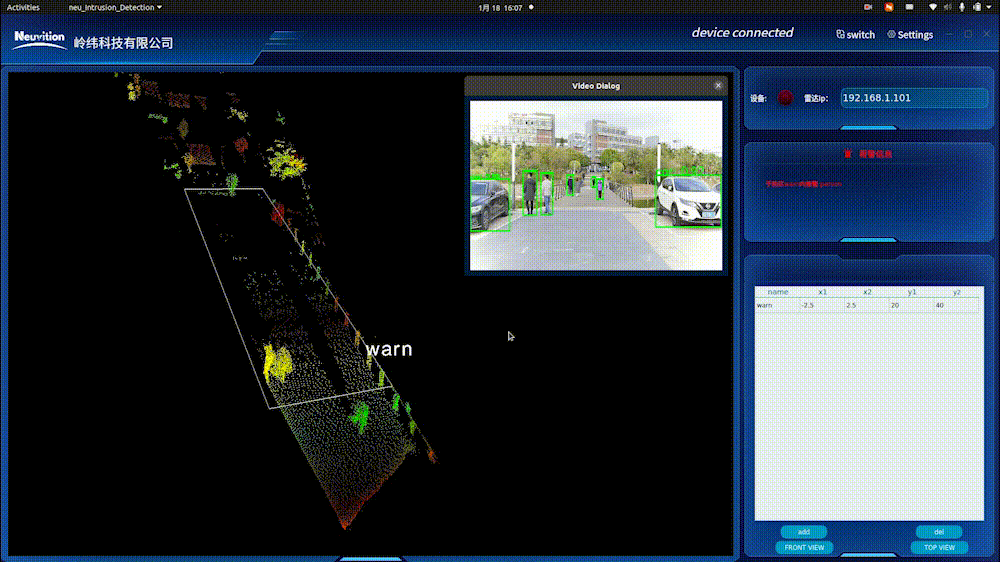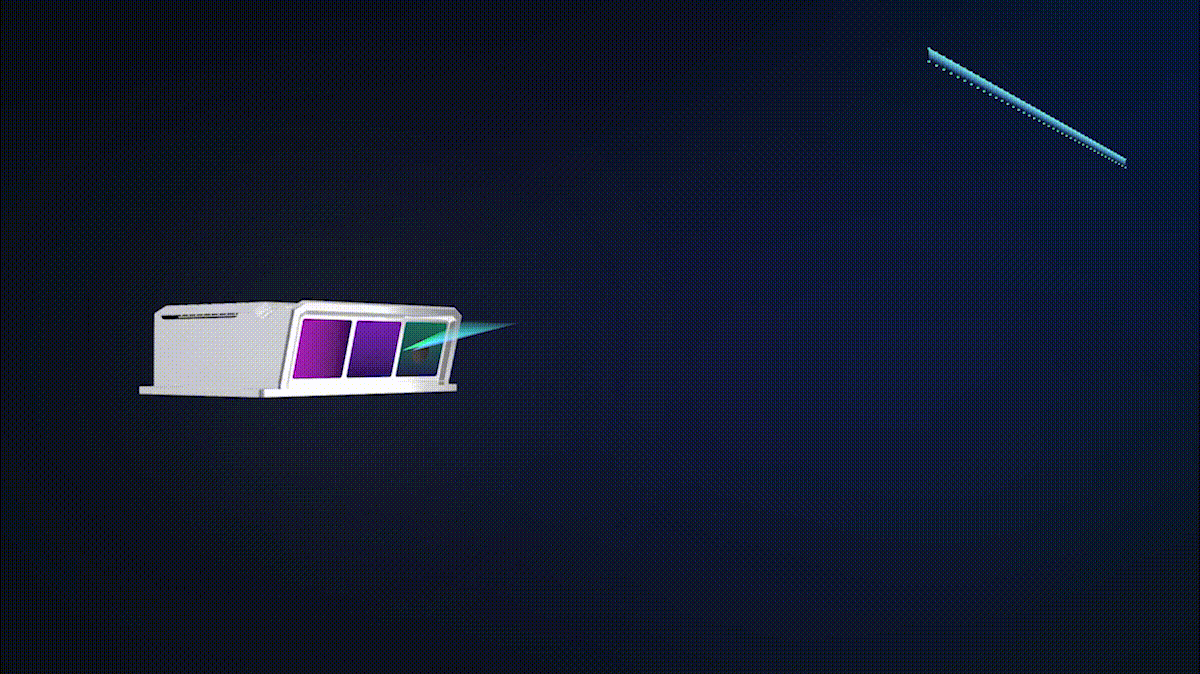Access Control Monitoring for High-Risk Areas Using LiDAR
Author: Release time:2024-01-02 09:12:12
In this blog post, we will explore the technical aspects of using LiDAR for access control monitoring in high-risk areas. We will discuss how LiDAR works, and its applications in access control systems in high-risk areas, and provide a step-by-step guide on implementing LiDAR-based solutions.
In recent years, Light Detection and Ranging (LiDAR) technology has emerged as a powerful tool for access control monitoring. LiDAR uses laser beams to measure distances and create detailed 3D maps of the surrounding environment. This technology offers several advantages over traditional methods by providing real-time data on movement patterns, object detection, and identification.
Access control monitoring is a critical aspect of security systems, especially in high-risk areas such as military bases, government facilities, and industrial sites. Traditional access control systems rely on various technologies like key cards, biometrics, and surveillance cameras to ensure authorized entry. However, these methods have limitations when it comes to accurately detecting and identifying potential threats.
Applications of LiDAR in Access Control Monitoring
1. Intrusion Detection: By deploying multiple LiDAR sensors around the perimeter of a high-risk area, any unauthorized movement can be detected and immediately reported. LiDAR’s ability to create accurate 3D maps allows for precise tracking and identification of intruders.

2. Object Recognition: LiDAR can identify objects based on their shape, size, and movement patterns. This capability enables access control systems to differentiate between humans, vehicles, animals, or other potential threats.
LiDAR technology excels at object detection due to its ability to create detailed 3D maps of environments. By combining LiDAR data with machine learning algorithms, it becomes possible to identify potential threats or unauthorized objects within high-risk areas.
For instance, LiDAR sensors can detect the presence of weapons or suspicious objects carried by individuals attempting unauthorized access. This real-time detection capability enhances security measures and allows for immediate response in critical situations.
3. Facial Recognition: Integrating LiDAR with facial recognition algorithms enhances access control systems’ accuracy in identifying authorized personnel. The 3D mapping provided by LiDAR helps overcome challenges posed by varying lighting conditions or disguises.
Traditional facial recognition systems often struggle with accuracy due to variations in lighting conditions or occlusions caused by accessories like glasses or masks. By combining facial recognition algorithms with LiDAR data, it becomes possible to create more robust identification systems that are less affected by external factors.
LiDAR can capture precise depth information about facial features regardless of lighting conditions since it operates based on emitted laser beams rather than ambient light sources. This enables more accurate face matching even under challenging circumstances.
4. Gesture Recognition: By analyzing hand movements captured by LiDAR sensors, access control systems can interpret gestures as commands for entry or denial of access.
Another application of LiDAR in access control monitoring is gesture recognition. By analyzing the 3D point cloud data captured by LiDAR, it becomes possible to detect and interpret hand gestures accurately. This can be used to grant or deny access based on predefined gestures, enhancing security and convenience.
For example, a high-risk area may require individuals to perform a specific hand gesture before gaining entry. LiDAR-based gesture recognition systems can ensure that only authorized individuals are granted access by accurately detecting and interpreting these gestures.
The basic components of a typical LiDAR system include:
1. Laser Source: Emits short pulses of laser light.
2. Scanner: Directs the laser beam in different directions.

3. Photodetector: Measures the intensity of reflected light.
4. Timing Circuitry: Calculates distance based on time-of-flight measurements.
5. GPS/IMU (Global Positioning System/Inertial Measurement Unit): Provides precise location information.
Implementing a LiDAR-Based Access Control System
Step 1: Assess Security Requirements
Before implementing a LiDAR-based access control system, it is crucial to assess the specific security requirements of the high-risk area. Identify potential vulnerabilities and determine the number and placement of LiDAR sensors accordingly.
Step 2: Select Suitable Hardware
Choose reliable and accurate LiDAR sensors that meet the requirements of your access control system. Consider factors such as range, resolution, scanning speed, and environmental durability when selecting hardware components.
Step 3: Design Sensor Placement
Create a comprehensive plan for sensor placement based on the identified security vulnerabilities. Ensure optimal coverage while minimizing blind spots that could be exploited by intruders.
Step 4: Integration with Access Control Software
Integrate the selected LiDAR hardware with an appropriate access control software platform capable of processing real-time data from multiple sensors simultaneously. The software should provide features like intrusion detection alerts and object recognition capabilities.
Step 5: Calibration and Testing
Calibrate each sensor to ensure accurate distance measurements across all devices in your networked system. Perform thorough testing to verify the system’s functionality and identify any potential issues or false positives.
Step 6: Data Analysis and Reporting
Implement a data analysis framework that can process the vast amount of data generated by LiDAR sensors. Develop algorithms to detect anomalies, recognize authorized personnel, and generate real-time reports for security personnel.
Future Trends and Market Size
The market for LiDAR technology in access control monitoring is expected to grow significantly in the coming years. According to a report by MarketsandMarkets (https://www.marketsandmarkets.com/Market-Reports/lidar-market-1261.html), the LiDAR market is projected to grow from USD 1.4 billion in 2023 to USD 3.7 billion by 2028; it is expected to grow at a compound Annual Growth Rate (CAGR) of 19.4% from 2023 to 2028.
The end-use application environment of LiDAR is to account for the larger share of the LiDAR market throughout the forecasted period. LiDAR is frequently used in environmental end-use applications for environmental resource monitoring and surveying. From airborne carbon mapping to coastal monitoring surveys, laser scanning systems are well suited for environmental monitoring end-use applications. In a variety of end-use applications, such as forest management, shoreline management, pollution modeling, agriculture, wind farms, and precision forestry, LiDAR is widely used to scan and monitor the environment.
One key trend driving this growth is the increasing demand for enhanced security measures in high-risk areas such as airports, government facilities, and critical infrastructure sites. The accuracy and reliability offered by LiDAR-based access control systems make them an attractive choice for organizations looking to strengthen their security protocols.
Additionally, advancements in AI algorithms and machine learning techniques will further improve the capabilities of LiDAR-based systems. These advancements will enable more accurate facial recognition, gesture recognition, and object detection capabilities while reducing false positives/negatives.
Conclusion
LiDAR technology offers significant advantages in access control monitoring for high-risk areas. Its ability to provide accurate 3D mapping, object recognition, and identification capabilities enhances security systems’ effectiveness. By following the step-by-step guide outlined in this blog post, organizations can implement a robust LiDAR-based access control system tailored to their specific security requirements.
As technology continues to advance, we can expect further innovations in LiDAR applications for access control monitoring. The integration of artificial intelligence and machine learning algorithms with LiDAR data will enable even more sophisticated threat detection and prevention capabilities.